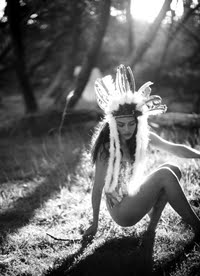The group borrowed its name from a defunct Detroit band that in turn had taken it from a 1945 pulp novel by Irving Schulman, infamous for its graphic depictions of drug abuse, sexual acts, and violent exploits among urban Jewish gangs.
As the band's lineup changed over the years, Nugent became the predominant force. Gone were the drug references in the group's songs and album cover art.
The Dukes signed with Detroit record label Mainstream in 1967 and released their debut album The Amboy Dukes, which featured "Baby Please Don't Go." The album was recorded in one night on a four-track recorder. After the album's release, White and Lober left the band and were replaced by bass player Greg Arama and keyboardist Andy Solomon. In 1968, guitarists Nugent and Farmer collaborated on the composition of the group's national hit single, "Journey to the Center of the Mind." The song dealt with mind expansion, presumably through psychotropic drugs--a conclusion supported by the album cover's artwork, which featured drug paraphernalia.
The trend was also apparent in songs like "Why Is a Carrot More Orange Than an Orange" and "The Inexhaustible Quest for the Cosmic Cabbage." The latter song, ten minutes in length, is notable for its inclusion of a portion of Hungarian classical composer Bela Bartók's Second String Quartet and a segment parodying the Beach Boys. Following the release of the album, Nugent fired vocalist Drake over creative differences, replacing him with 350-pound white soul singer Rusty Day.
After signing a two-album contract with Polydor Records, the Dukes recorded Marriage on the Rocks: Rock Bottom and Survival of the Fittest; the latter album, drummer K.J. Knight recalled on his website, "sold 50,000 to 75,000 copies." The album was recorded over two nights in the Detroit-area Eastown Theater. In 1971, Day and Arama were fired for drug abuse, and Palmer departed to embark upon a career as a recording engineer. Day eventually died of an overdose, and Arama died in a motor vehicle accident.
After these changes, the reconstituted group recorded two albums, Call of the Wild and Tooth, Fang, and Claw, for Frank Zappa's Discreet label in, respectively, 1974 and 1975. By this time, the group was billed as Ted Nugent and the Amboy Dukes.











.JPG)












































































4 comments:
Thanks! I always thought that Rusty Day was the same person who later sang & played harp with Cactus in the '70s. If he was, he must have lost a ton of weight [maybe from his drug use!?]. Also, the Cactus R. Day later was shot to death in a drug deal gone bad along with his son, according to the liner notes on one of their CD's. Anyone know if these are the same person?
You are correct about Rusty Day being with both bands. And he did end up getting killed in a drug related incident Too bad great vocalist
One of my favourite band.With Amboy Dukes TED NUGENT prove that he is a great guitar player.Thanks...
He is also noted for his staunch conservative political views and his strong defense and support of hunting and gun ownership rights.
Post a Comment